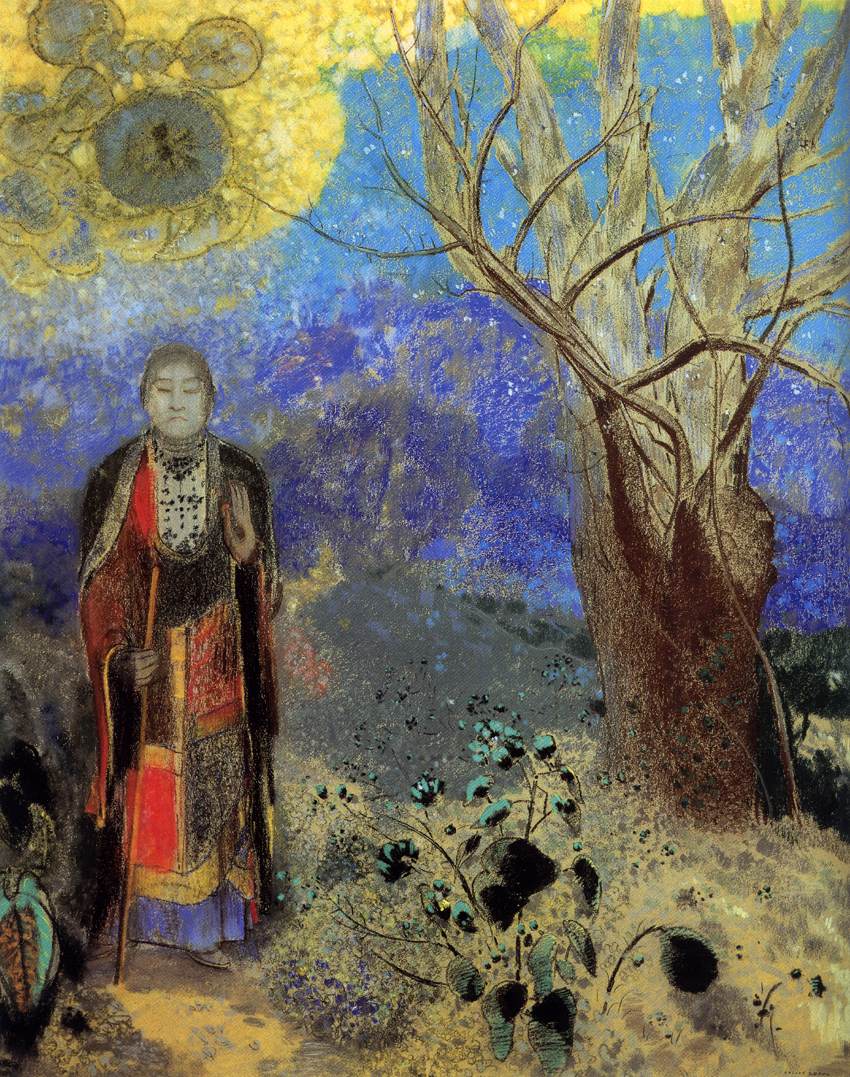Redon's work represents an exploration of his internal feelings and psyche. He himself wanted to "place the logic of the visible at the service of the invisible"; thus, although his work seems filled with strange beings and grotesque dichotomies, his aim was to represent pictorially the ghosts of his own mind. A telling source of Redon's inspiration and the forces behind his works can be found in his journal A Soi-même (To Myself). His process was explained best by himself when he said: "I have often, as an exercise and as a sustenance, painted before an object down to the smallest accidents of its visual appearance; but the day left me sad and with an unsatiated thirst. The next day I let the other source run, that of imagination, through the recollection of the forms and I was then reassured and appeased." Redon had a keen interest in Hindu and Buddhist religion and culture. The figure of the Buddha increasingly showed in his work. Influences of Japonism blended into his art, such as the painting The Death of the Buddha around 1899, The Buddha in 1906, Jacob and the Angel in 1905, and Vase with Japanese warrior in 1905, amongst many others.




The Buddha
pastel • 90 x 73 cm
 Odilon Redon
Odilon Redon